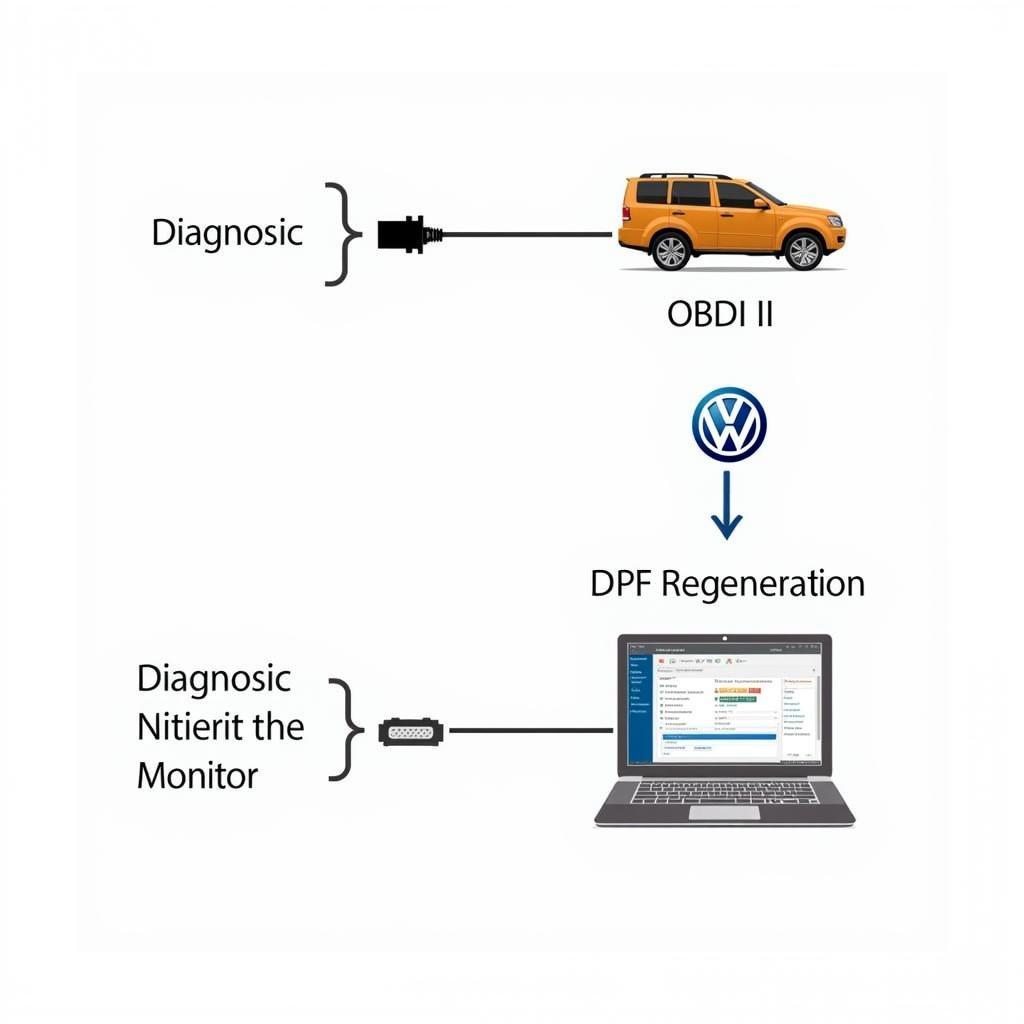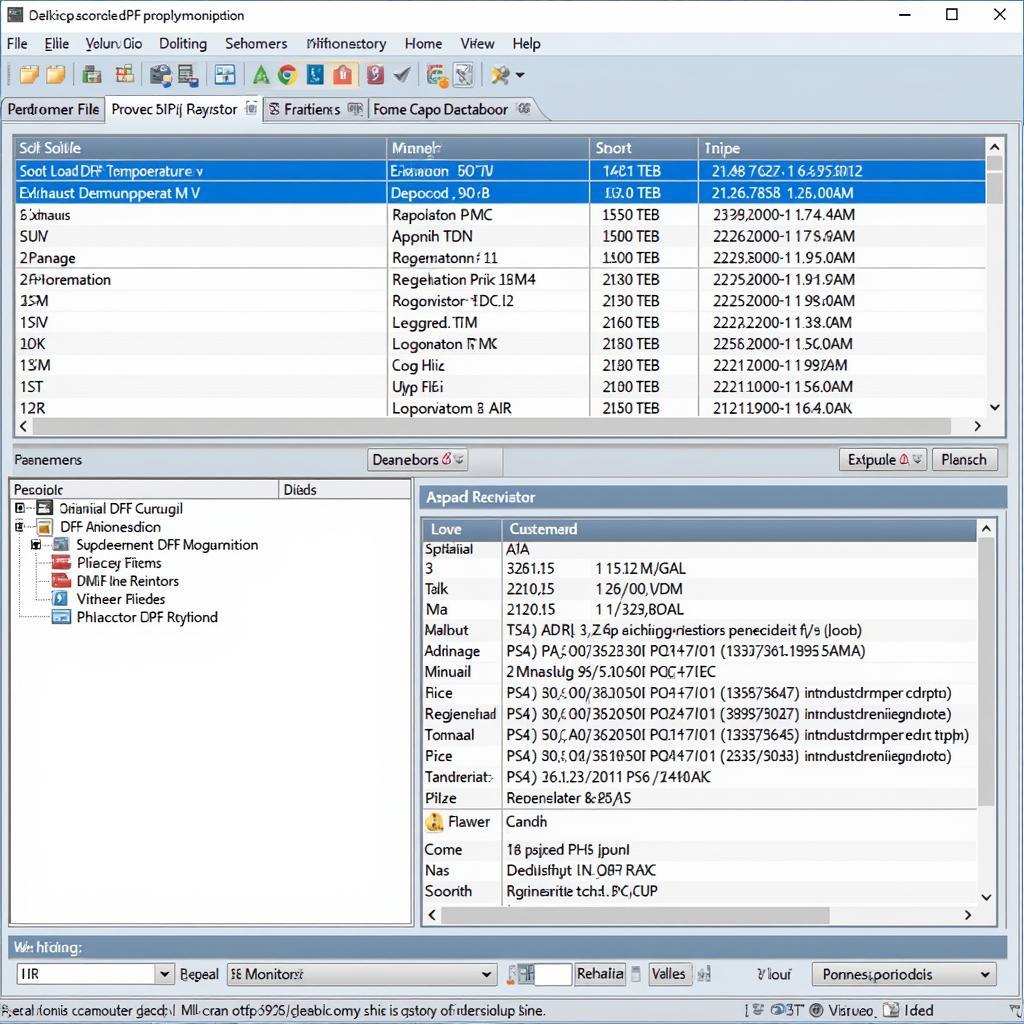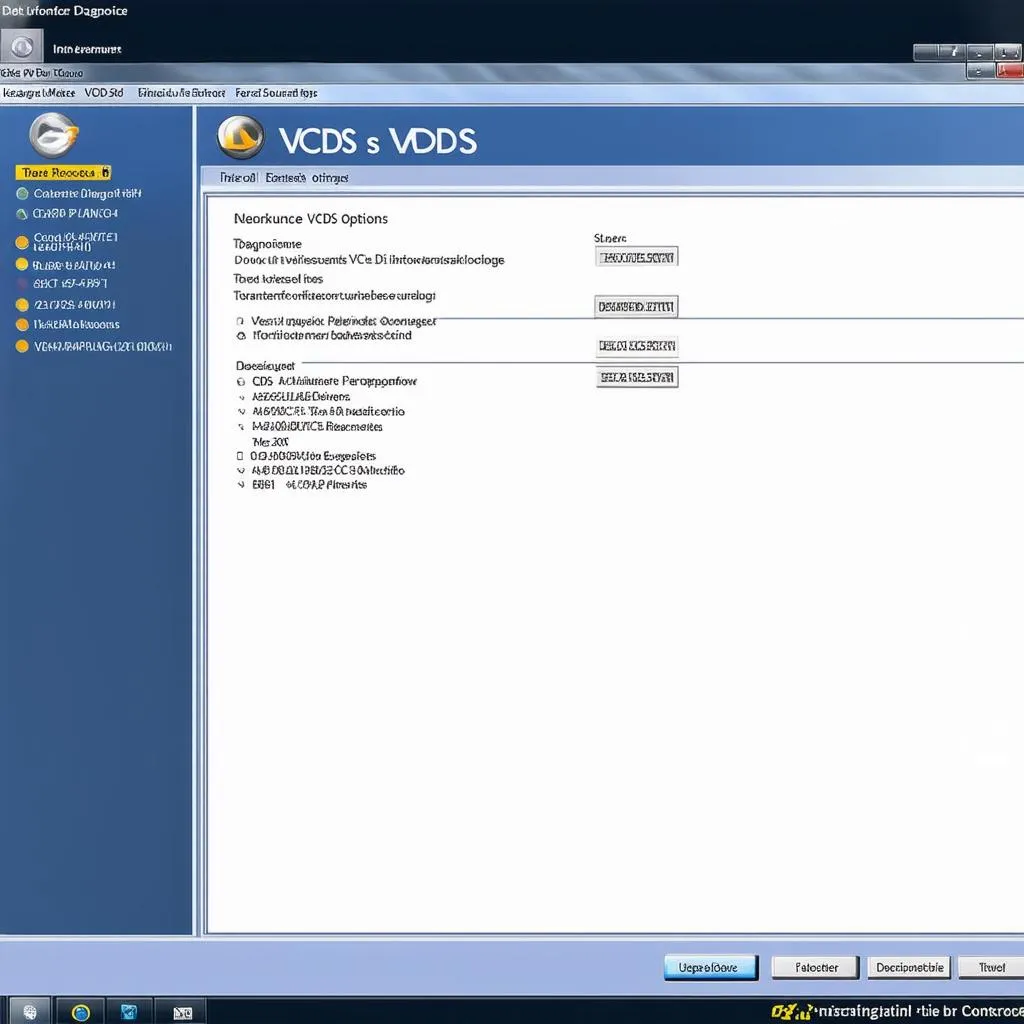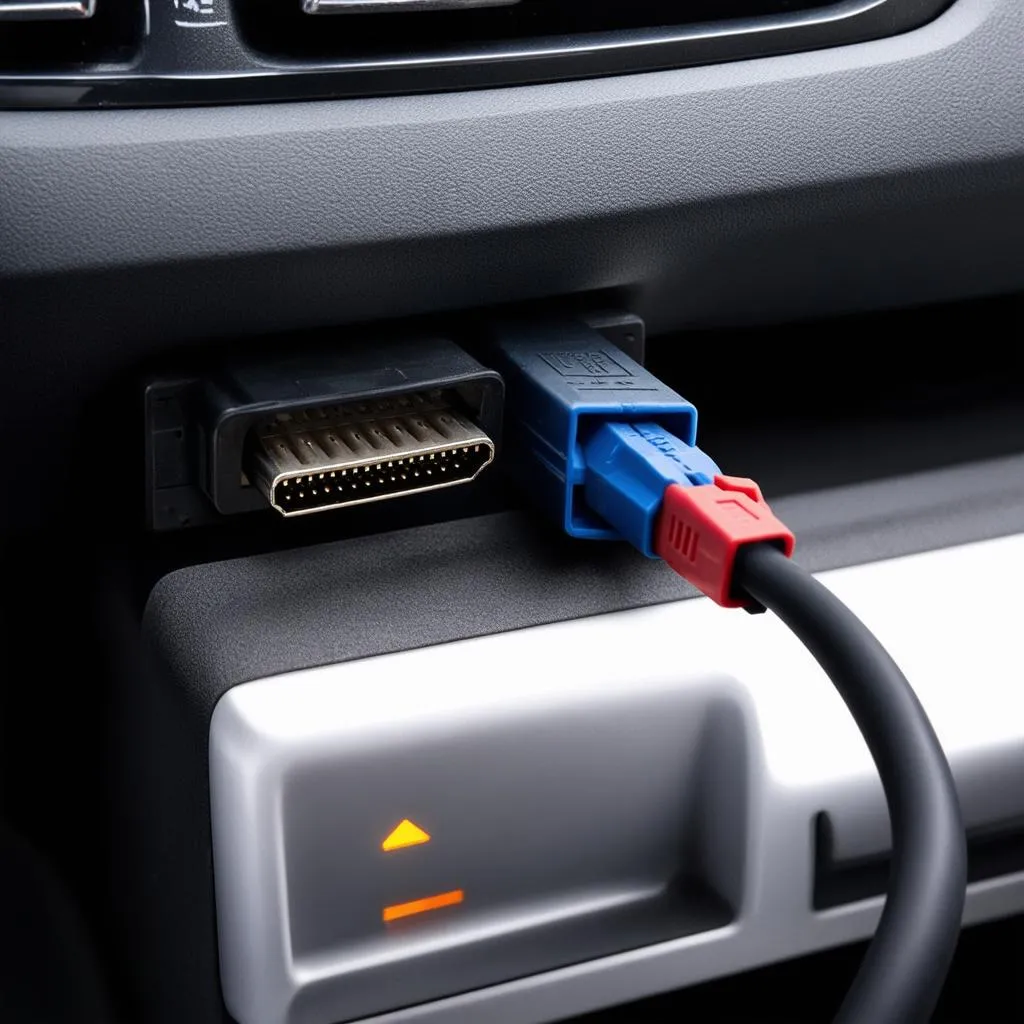Performing a VW DPF regeneration with VCDS is a common procedure for addressing Diesel Particulate Filter issues in Volkswagen vehicles. This guide provides a step-by-step approach and valuable insights into the process, helping car owners, mechanics, and technicians effectively resolve DPF problems.
Understanding the function and importance of the DPF is crucial. The DPF traps soot and other harmful particulates from the diesel engine’s exhaust, preventing them from being released into the atmosphere. Over time, the DPF becomes clogged with soot, requiring regeneration to burn off the accumulated particles. VCDS, the Vag-Com Diagnostic System, offers a powerful tool for initiating and monitoring this regeneration process.
Understanding VW DPF Regeneration
DPF regeneration involves burning the collected soot at high temperatures, converting it into ash. There are two types of regeneration: passive and active. Passive regeneration occurs automatically during highway driving when exhaust temperatures are naturally high. Active regeneration, on the other hand, is initiated by the engine control unit (ECU) under specific conditions, often when the soot load reaches a certain threshold. When a forced DPF regeneration is required, VCDS becomes invaluable.
 VW DPF Regeneration Process with VCDS
VW DPF Regeneration Process with VCDS
Performing DPF Regeneration with VCDS
Before starting the forced DPF regeneration with VCDS, it’s essential to ensure the vehicle meets certain prerequisites, such as sufficient fuel level and a healthy battery. Connecting the VCDS interface to the vehicle’s OBD-II port, you can access the engine control module and initiate the regeneration process. You can learn more about the general process at dpf regen vcds.
Step-by-Step Guide to VW DPF Regeneration using VCDS
- Connect the VCDS interface to the vehicle’s OBD-II port and your laptop.
- Turn the ignition on without starting the engine.
- Launch the VCDS software and select the appropriate control module for your vehicle.
- Navigate to the “Basic Settings” or “Advanced Functions” section, depending on your vehicle model.
- Select the “DPF Regeneration” option.
- Follow the on-screen prompts and enter the required parameters, such as the soot load limit.
- Start the engine and allow it to idle while the regeneration process takes place.
- Monitor the progress of the regeneration through the VCDS software, observing parameters like exhaust temperature and soot load.
- Once the regeneration is complete, check the DPF soot level and ensure it’s within the acceptable range. For specific Touareg procedures see vw touareg dpf regeneration vcds.
 VCDS Software Screenshot during DPF Regeneration
VCDS Software Screenshot during DPF Regeneration
“Using VCDS for DPF regeneration offers a precise and controlled approach, allowing technicians to effectively address DPF issues,” says Michael Schmidt, Senior Automotive Diagnostics Engineer at CARDIAGTECH. “The software provides valuable insights into the regeneration process, ensuring a successful outcome.”
Troubleshooting Common Issues
Sometimes, the DPF regeneration process may not complete successfully, indicating underlying problems. Common issues include faulty DPF pressure sensors, clogged exhaust systems, or problems with the ECU. For instructions on resetting the soot levels, visit vcds dpf soot level reset. VCDS can assist in diagnosing these issues by reading fault codes and monitoring relevant parameters.
“Regularly monitoring DPF health with VCDS can prevent costly repairs down the line,” advises Emily Carter, Lead Technician at CARDIAGTECH. “Early detection and proactive maintenance are essential for optimal DPF performance.” For details on forced regeneration procedures see vcds force regen. A detailed procedure specifically for VW models can be found at vw dpf regeneration procedure vcds.
Conclusion
Performing a vw dpf regeneration vcds offers a powerful solution for managing DPF health and resolving related issues. By following the outlined steps and understanding the underlying principles, you can effectively address DPF problems and ensure optimal engine performance.
FAQ
- How often should I perform a DPF regeneration?
- What are the symptoms of a clogged DPF?
- Can I perform a DPF regeneration while driving?
- What should I do if the regeneration fails?
- How can I prevent DPF problems?
- What is the cost of a DPF replacement?
- How long does a DPF regeneration typically take?
Need assistance with your VW DPF regeneration or other car diagnostic services? Contact us via Whatsapp: +1 (641) 206-8880, Email: CARDIAGTECH[email protected] or visit our workshop at 276 Reock St, City of Orange, NJ 07050, United States. Our 24/7 customer support team is ready to help.


